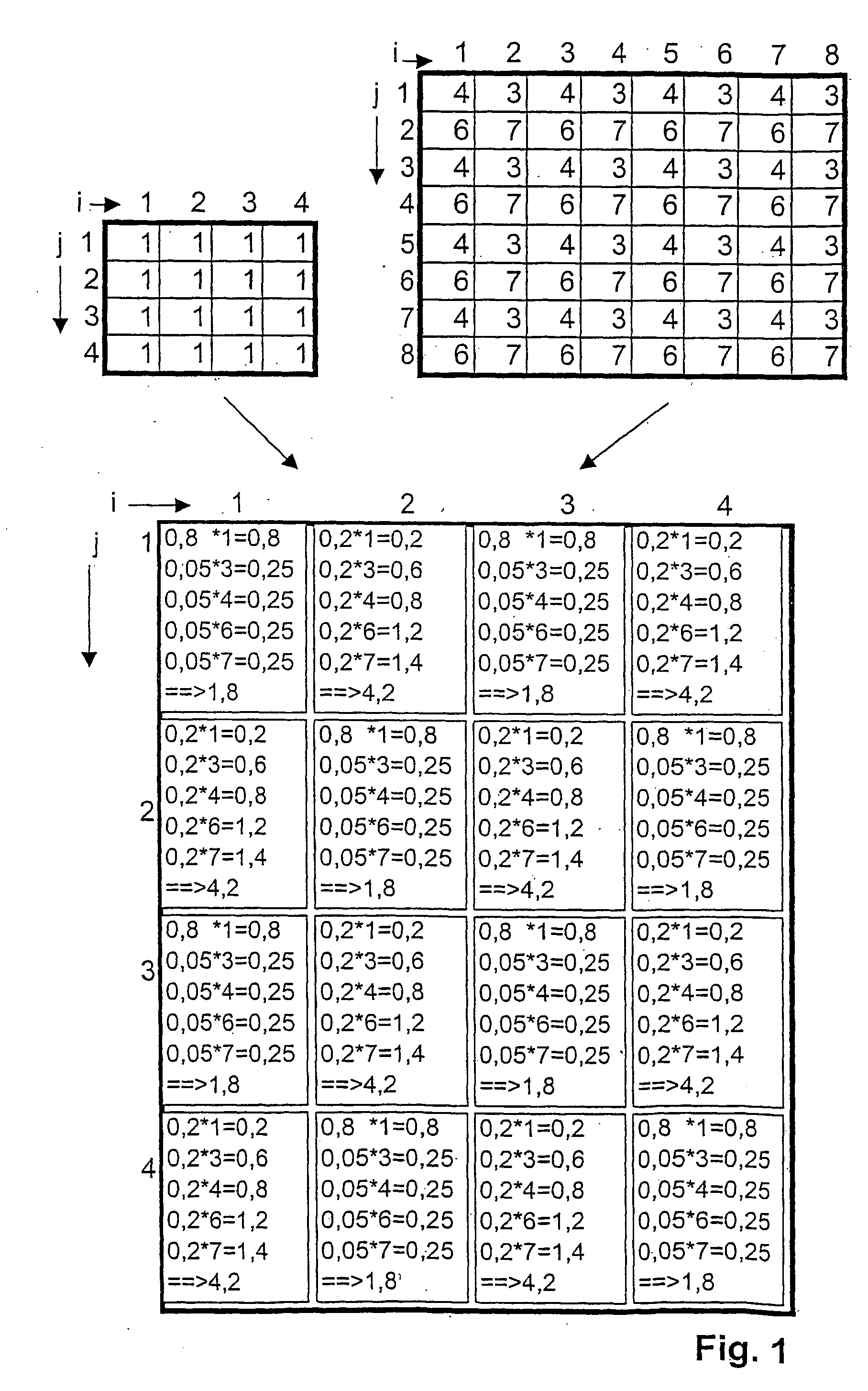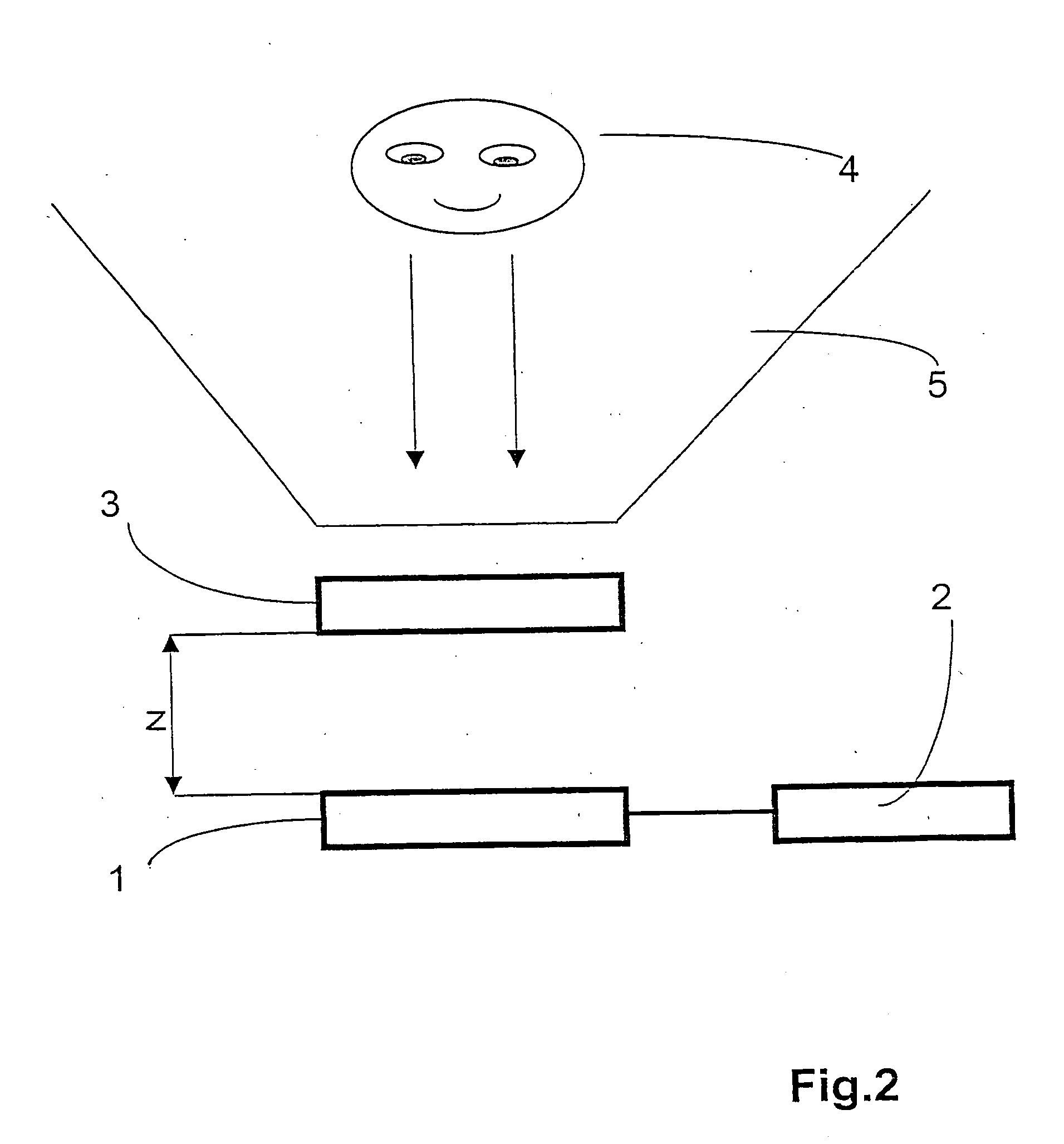Method for auto-stereoscopic image display with a wavelength filter array
a filter array and auto-stereoscopic technology, applied in the direction of optical radiation measurement, instruments, spectrometry/spectrophotometry/monochromators, etc., can solve the problems of affecting the quality of three-dimensional visualization, affecting the resolution of perspective images, and limited maximum number of views that can be displayed
- Summary
- Abstract
- Description
- Claims
- Application Information
AI Technical Summary
Benefits of technology
Problems solved by technology
Method used
Image
Examples
Embodiment Construction
[0006] Proceeding from the prior art as described, it is the objective of the invention to improve the quality of image rendition in a method of three-dimensional visualization.
[0007] According to the invention, the objective, in a method of the type described above, is achieved by allocating bits of partial information from at least two different views at a time to at least one image rendering element, this allocation being effected in such a way that the wavelength of the partial information is always equal to the wavelength, or lies in the wavelength range, of the light emitted by the allocated image rendering element.
[0008] If bits of partial information from different views are simultaneously rendered by at least one image rendering element, more views can be used with an image display device of a particular resolution. A greater number of views corresponds to a denser staggering in spatial depth or in perspective, so that the three-dimensional impression is improved. Moreover,...
PUM
 Login to View More
Login to View More Abstract
Description
Claims
Application Information
 Login to View More
Login to View More - R&D
- Intellectual Property
- Life Sciences
- Materials
- Tech Scout
- Unparalleled Data Quality
- Higher Quality Content
- 60% Fewer Hallucinations
Browse by: Latest US Patents, China's latest patents, Technical Efficacy Thesaurus, Application Domain, Technology Topic, Popular Technical Reports.
© 2025 PatSnap. All rights reserved.Legal|Privacy policy|Modern Slavery Act Transparency Statement|Sitemap|About US| Contact US: help@patsnap.com



